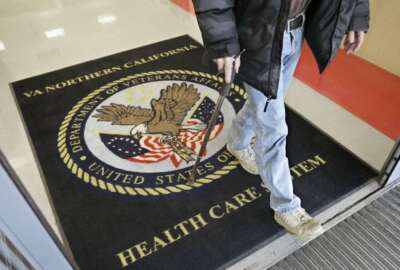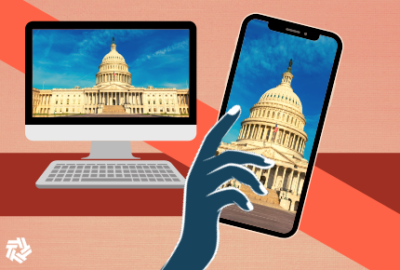Agencies see success in customer journey maps — now employees are getting their own
Veterans Affairs recently created the first-ever employee journey map, which the Trump administration sees as a potential tool for agencies. Journey maps could help...
More agencies are relying on customer journey maps as a way to track and measure how their constituents are using their services.
Now, some agencies are even applying the concept to their own employees.
The Department of Veterans Affairs piloted the trend when it first created a journey map for veterans back in 2015, and since then other agencies have taken notice.
The Census Bureau, for example, created journey maps as a way to track how a variety of users might engage with the 2020 count.
The Office of Management and Budget recently helped agencies complete two new governmentwide customer experience journey maps, Amira Boland, an OMB customer experience lead, said earlier this month.
The new maps detail experiences for individuals with disabilities and those who have survived a natural disaster, she said.
But earlier this fall, VA took the initiative to a new level when it created the first-ever employee journey map.
VA’s Veterans Experience Office had the department specifically in mind when it created the tool, but other agencies could easily borrow the concept.
“Obviously the VA employee experience has really unique elements that are specific to VA, but that journey map is certainly something that I know they’re hoping other agencies will also learn from and be able to take and build off of and adapt to be relevant to [their] agency’s culture,” Boland said at ACT-IAC’s virtual customer experience summit in mid-November. “A lot of those core components of what it means to be a federal employee are similar across.”
VA interviewed employees from a wide variety of disciplines across the department, from frontline healthcare workers and those administering benefits, to others in procurement and finance, said Airis Gill, director of management, planning and analysis for VA’s Veterans Experience Office.
VA spoke with employees at various General Schedule levels. Members of the Senior Executive Service were part of the project as well, Gill said.
“Even though we’re doing it for VA, it is at a level that is high enough that really is applicable to all,” she said. “We talked to, certainly, clinicians and those who are in the medical field, but we also talked to attorneys and housekeepers and food service workers and just really ran the gamut of our folks.”
The department collected more than 11,000 data points, which it eventually summarized into an employee journey map with five phases, 23 stages and 30 “moments that matter.”
Those moments cover everything from the application and interview process to employee retention.
“The same way that our veterans, families, caregivers and survivors have a choice about whether to use VA services, our employees also have a choice about whether or not they want to stay a part of the VA family,” Gill said. “We certainly want them to.”
The department is choosing two specific points on the employee journey map to prioritize and then search for improvements. Gill said VA will first focus on the employee onboarding process. It may also prioritize career development opportunities later.
For OMB, it sees an opportunity to replicate VA’s employee journey map across the federal government — and use employee engagement data and feedback to study other workforce trends.
“Are there regional trends? It seems like there’s maybe something going on in some areas where there’s less satisfaction with multiple services or more satisfaction with multiple services,” Boland said. “What can we learn by putting this together? As we think about how federal agency regions are managed, how do we get this data into the hands of people who can use it?”
The Veterans Health Administration, for example, has mapped hospital outpatient trust scores against data from the agency’s all-employee survey for each major VA facility.
“Those that have high levels of trust score and also have high levels of engagement, what are those best practices?” Gill said. “What can we learn from those areas? For those that may have a low score on both of those, again, what’s happening in those areas?”
VA’s hospital in Dallas, for example, boosted patient trust scores by 7% between 2018 and 2019. Leadership at the hospital there have actively solicited employee feedback and given them opportunities to pursue specific recommendations, Gill said.
“We also know that Dallas has really made a concerted effort to bring the voice of the employee to the table into their decision-making through crowdsourcing,” she said.
The Transportation Security Administration is taking a similar approach.
Together with OMB’s help, TSA gathered customer complaint data for each airport and mapped it against Federal Employee Viewpoint Survey results for each facility in 2018 and 2019.
The goal, said Nicole French, TSA’s customer service branch manager, was to identify airports with high employee engagement and few customer complaints.
“We’re always trying to balance customer service and security,” she said. “Honestly, having a calmer checkpoint leads to better security. It allows the officers to focus more. The link is definitely there between employee engagement and customer satisfaction. When you’re doing something as important as airport security that really matters.”
TSA’s complaint and employee engagement maps helped the agency notice employee engagement trends regionally.
Of the airports in the New York City region, for example, LaGuardia had the best employee engagement and the fewest number of customer complaints compared to the John F. Kennedy and Newark Liberty International Airports nearby.
“They’re all run by Port Authority. [They have] the same general customer base. The employees are all coming from similar areas, yet La Guardia clearly outperforms the other two,” French said. “We’re going to work with LaGuardia and find out what are they’re doing? What are they doing there that is clearly working really well. They have low complaints and high engagement.”
Her team is also performing additional statistical analyses to determine whether employee engagement is, in fact, a reliable and consistent predicator of strong customer service — and whether specific airports have implemented certain workforce initiatives that TSA could replicate across the agency.
“It’s given us a lot of places to try to do targeted interventions for customer experience and also work with the airports to find out how they’re being so successful,” she said.
Still, TSA is limited somewhat by the data it collects from its customers and employees. Most travelers only call the agency’s contact center to complain about a poor experience, and TSA only surveys its airport screeners on a mass scale once a year through the FEVS.
French said TSA is currently exploring how it can incorporate additional human capital data into its customer and employee engagement and experience maps.
“Is there a way to add in retention or absenteeism or call-out rates? This is a great starting point,” she said. “But this has really sparked us to look at what other administrative data we have that we can incorporate to see what other conclusions we could draw.”
Copyright © 2025 Federal News Network. All rights reserved. This website is not intended for users located within the European Economic Area.
Nicole Ogrysko is a reporter for Federal News Network focusing on the federal workforce and federal pay and benefits.
Follow @nogryskoWFED
Related Stories

VA cooking up new guide of CX strategies, training institute for its own employees




